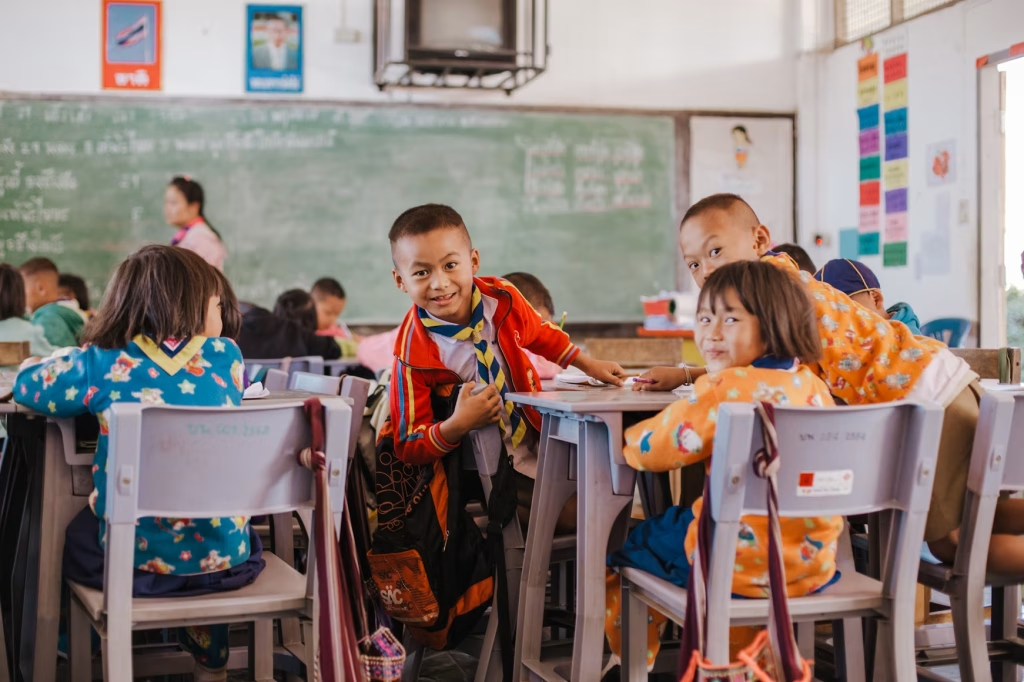
What if the world changed—but schools didn’t? Parenting today can feel like equipping children for a future we can’t fully envision. Technology transforms daily, job markets shift, and life looks drastically different than it did a generation ago. Yet walk into many classrooms, and it’s like stepping into a time warp: textbooks, lectures, bubble tests—remnants of an older era. With these old methods still dominating, parents are asking: does the outdated education system truly align with our modern needs—or is it trying to catch up with a world that has already passed it by?
Today’s Classrooms Echo Yesterday’s Priorities
Much of the modern school model was developed during the Industrial Revolution. That environment stressed punctuality, obedience, and rote memorization—factors crucial for factory workers. But in today’s digital, innovation-driven society, the emphasis has shifted toward problem-solving, adaptability, and creative thinking. According to an Edutopia analysis of school practices, clinging to outdated approaches often leaves students disengaged and ill-prepared for real-world challenges. Employers and universities are increasingly looking for collaboration, empathy, and resilience—traits you can’t just cram from a textbook.
Key Skills Are MIA in Traditional Education
Knowing facts alone doesn’t cut it anymore; the ability to find, interpret, and apply knowledge is king. Yet standard curricula typically prioritize passing tests over teaching critical life skills—like financial literacy, effective communication, and digital fluency.
For example, though coding and STEM are gaining traction in certain schools, many still allocate minimal time to them. While students might memorize historical dates or math formulas, they often struggle with day-to-day tasks such as creating a budget or writing a professional email. The gap between school lessons and future workplace realities can make young adults feel unprepared right when they need confidence the most.
Students Are Graduating—But Not Truly Ready
Plenty of teens walk the graduation stage only to realize they’re not equipped for life beyond the classroom. This mismatch might surface as anxiety over a job interview, bewilderment over how to do taxes, or a general sense that the “real world” is far more complex than their school days suggested.
Without hands-on experiences like internships, community projects, or actual mentorship in practical tasks, students often exit school with high GPAs but weak real-world navigation skills. It’s like learning to drive without ever getting behind the wheel—fine in theory, problematic in practice.
Outdated Theories Still Linger
Even how core subjects are taught sometimes relies on debunked or dubious educational theories. For instance, reading instruction in many classrooms has historically leaned on so-called “three cueing” strategies, which have shown significant shortcomings in helping children become fluent readers.
These older methods persist in teacher training and curricula in some districts, hindering progress. This mismatch underlines a bigger issue: when policy lags behind academic findings, students bear the consequences.

Parents Are Sounding the Alarm
Increasingly, parents are pushing back, citing concerns that the standard academic path isn’t aligned with future realities. Whether it’s dissatisfaction with rigid standardized tests, the desire for more flexible scheduling, or the wish for real-life skill-building, families are questioning the status quo. They observe that while kids spend hours prepping for multiple-choice exams, they rarely learn about self-care, budgeting, or conflict resolution—skills vital for adult life. That’s not simple frustration; it’s a call for broad reforms and a system that genuinely fosters the diverse talents of each child.
What You Can Do at Home
Even if your local school system isn’t overhauling its approach, you can fill in the gaps:
- Encourage Real-World Exploration: Whether through weekend volunteer work, part-time jobs, or online classes in coding or finances, show your child that learning goes beyond the desk.
- Model Problem-Solving: Invite your child to help plan a family budget or cook a meal, teaching decision-making and accountability.
- Advocate for Change: Attend school board meetings, join parent committees, or collaborate with teachers open to trying new projects. A single voice can spark surprising shifts.
Rethinking “Prepared” in a Changing World
We can’t go back, but we can move forward thoughtfully. While the outdated education system still dominates many spaces, parents aren’t powerless. Through consistent advocacy and complementary home learning, you can bridge the gap between what’s taught and what’s essential.
At its heart, success in the 21st century isn’t about memorizing facts—it’s about creativity, resilience, empathy, and the ability to adapt. When we update our definition of “prepared,” we give our children the best shot at navigating a future where change is the only constant.
Are you noticing gaps between your child’s school experience and the real world? Share your thoughts in the comments—your observations might help another parent find new ways to supplement their child’s education.
Read More:
- 14 Profitable Stay-at-Home Mom Jobs Online (That Are Worth Your Time)
- The Cheapest Way to Qualify as a Teacher While You’re a Stay At Home Mom

Samantha Warren is a holistic marketing strategist with 8+ years of experience partnering with startups, Fortune 500 companies, and everything in between. With an entrepreneurial mindset, she excels at shaping brand narratives through data-driven, creative content. When she’s not working, Samantha loves to travel and draws inspiration from her trips to Thailand, Spain, Costa Rica, and beyond.